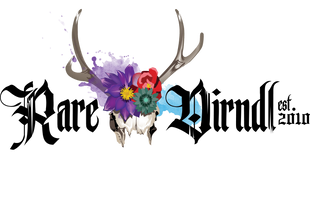What is Walpurgisnacht? Uncovering the German Night of Witches
What is Walpurgisnacht? Often known as the Night of Witches or Hexennacht, it is celebrated on the eve of May Day, April 30th and it’s a time when the folklore of ancient pagan customs and the veneration of Saint Walpurga from Christian tradition intermingle under the spring sky. Imagine a night alight with bonfires, mythic tales of witch gatherings, and the promise of spring’s renewal. This introduction will guide you through the historical and cultural significance of Walpurgisnacht’s vibrant traditions.
Key Takeaways
-
Walpurgis Night originates as a mix of pagan spring rites and the legend of Saint Walpurga, evolving into an event where folklore depicts witches gathering on the Harz Mountains, particularly the Brocken peak.
-
Saint Walpurga, associated with the Christianization of the region, has her feast day on May 1st, lending her name to the night which features icons and rites from both pagan and Christian traditions to celebrate spring and fertility.
-
Today, Walpurgisnacht is celebrated with bonfires, costumes, and dancing, resembling a springtime Halloween, and has been referenced in literature, emphasizing its mystic and supernatural associations.
Unraveling the Walpurgisnacht Mystery

On April 30th, people celebrate Walpurgis Night, a festival that commemorates the start of spring after a long winter. This holiday has its roots in pagan traditions and rituals related to fertility and rebirth, but over time it has also become associated with Christian beliefs through the legend of Saint Walpurga.
Originally linked to Norse celebrations, this event is now observed by both pagans and Christians alike. It takes place in the Harz Mountains, where ancient customs such as lighting bonfires still hold strong significance today. The night holds an air of mystery due to its connection with witches who are said to roam freely during this time.
The origins may have been rooted in celebrating nature’s revival, but throughout history, elements from different cultures have blended together making Walpurgisnacht into a unique fusion between old Pagan practices and new Christian legends surrounding Saint Walpurga, an English nun whose story intertwines with this special evening.

The Harz Mountains Connection
The Harz Mountains, located in northern Germany, are a mesmerizing range known for their natural beauty, dense forests, and rich folklore. At the heart of this enchanting landscape rises the legendary Brocken peak, standing tall at 3,747 feet (1,142 meters). This iconic peak offers breathtaking panoramic views, drawing hikers, nature enthusiasts, and history buffs alike to explore its rugged trails, ancient rock formations, and picturesque vistas.
During the Walpurgisnacht celebrations, the Brocken Peak, the highest peak of Germany’s Harz Mountains holds a special significance. It is believed that on May 1st, witches gather at this peak for their annual meeting according to German folklore influenced by pagan beliefs and Christian tales of Saint Walpurga.
For more than a millennium, people have observed the tradition of witches riding broomsticks and engaging in activities like dancing around fires and cavorting with demons as they mark the transition from winter to spring in the this mountain range. Today, tourists from all over come together to take part in these festivities and witness firsthand this unique cultural blend represented on what is known as “the witches dance floor”.
Saint Walpurga: The Woman Behind the Name
Walpurgis Night was named after the Christian Saint Walpurga, a missionary who played an important role in converting the Frankish Empire to Christianity. She was canonized on May 1 and is revered as the patroness of multiple cities. It was believed that she possessed powers to protect against witchcraft and malevolent spirits.
The celebration of Saint Walpurgis Night emerged from a unique fusion between Christian veneration for Saint Walpurga and pagan festivities honoring fertility during Beltane celebrations. This combination resulted in a festival marked by various customs and traditions representing both faiths, including elements typically seen in Christian celebrations. The timing also holds significance as it coincides with the changing seasons from winter to spring. She's often depicted with several significant symbols including an oil flask, three-grain spikes, a dog, a bundle of grain, and a book. This imagery can also be found at her tomb. These similarities suggest potential connections or influences between different belief systems. Combined, the blend of pagan and elements from the Catholic Church significantly contributes to defining celebrations like Walpurgisnacht.
The Witches' Gathering: Myth or Reality?
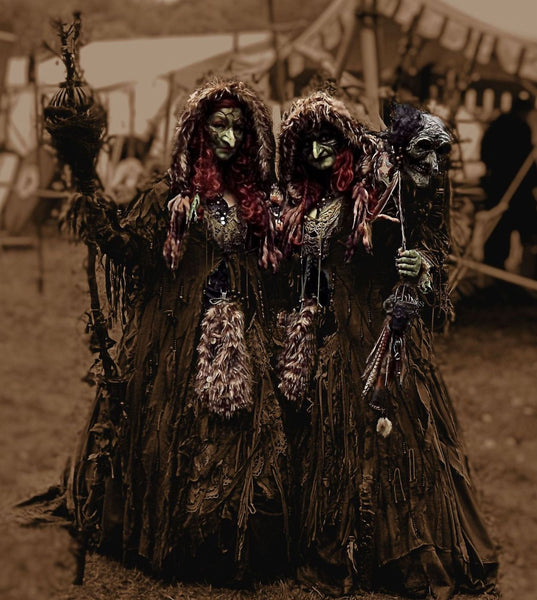
Deeply rooted in German folklore, Walpurgisnacht is often associated with witches. According to popular belief, this night was when the gathering of witches would take place. This myth has been perpetuated by the historical persecution of those accused as witches during the 16th century witch trials.
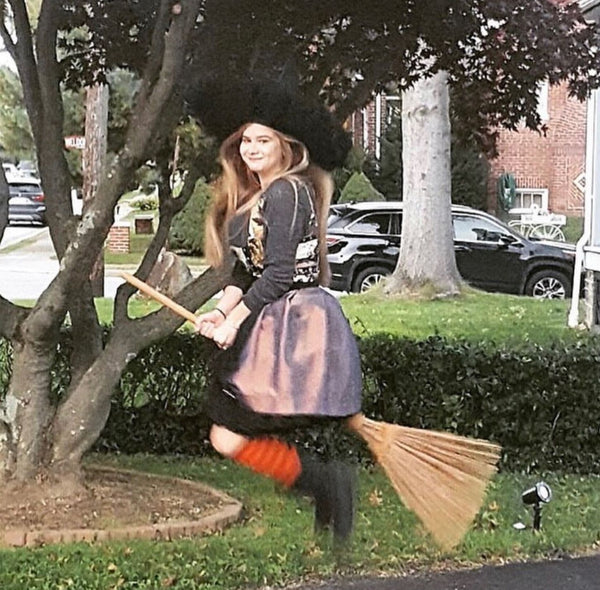
Despite regional differences, the core significance behind the celebration remains unchanged- protecting oneself from harm while rejoicing in the awakening of spring. As time passes, Walpurgisnacht could perhaps no longer be solely linked to its original meaning. Yet, because it continues through generations, it keeps alive old customs. In doing so, it reminds people how much their ancestors value believing that light will always prevail over darkness even at dark moments or events heralding something good or bad.
Witch Trials and Hysteria
During the 16th century, a time of widespread belief in witches and their supposed gatherings during significant times such as Walpurgisnacht, alleged witches faced intense fear and persecution. These beliefs were reflected in the Danish Law Code of 1521, which stated that holy periods were particularly active for witches.
The idea that witchcraft was associated with Mount Brocken located within Germany’s Harz Mountains grew popular across Europe during this period. People believed that on Walpurgisnacht, a night specifically dedicated to honoring Saint Walburga, but also known as Witches’ Night or May Eve, it is when witches gathered on Mount Brocken to engage in their mysterious rituals. This prevalent belief has heavily influenced how we perceive and celebrate Walpurgisnacht today due to societal and religious fears surrounding witchcraft.
Celebrating Walpurgisnacht: Traditions and Customs
Walpurgisnacht’s traditional customs uniquely blend pagan and Christian practices. These customs revolve around the central theme of welcoming spring and warding off evil spirits. Bonfires, a key aspect of Walpurgisnacht celebrations, symbolize the arrival of spring and are believed to keep away evil spirits. People also sing traditional folk songs, reflecting the joy and hope associated with the arrival of spring.

Over the years, these customs have evolved and adapted to modern practices. While the essence of traditional customs has been retained, new elements such as themed parties, costumes, and fireworks have been incorporated into the celebrations. These modern adaptations have made Walpurgisnacht a vibrant and exciting festival that brings together people from different walks of life to celebrate the arrival of spring.
Modern Day Celebrations and Adaptations
In modern times, Walpurgisnacht festivities have a strong resemblance to Halloween. Costumes with witch themes and colorful firework displays are key features of the celebrations, creating a lively and festive atmosphere.
Different countries put their own spin on the festival, adding unique elements to it. For example, in Germany, dressing up and enjoying oneself is similar to celebrating a second Halloween. The Czech Republic holds bonfires where they burn effigies as part of their ‘Burning of the Witches’ tradition.
Similarly, in Finland and Sweden, bonfires play an important role along with dancing in keeping alive customs that protect against evil spirits while embracing spring’s arrival.
Literary References to Walpurgisnacht

Various literary works feature Walpurgisnacht, where authors frequently use it as a backdrop for stories of supernatural terror and dark enchantment. Johann Wolfgang von Goethe’s “Faust” prominently features Walpurgisnacht. In the play, Faust’s love affair leads to tragedy on that fateful night, showing the dark and wild side. Thomas Mann’s “The Magic Mountain” also references Goethe’s work, further highlighting the eerie allure of Walpurgisnacht.
In “Dracula’s Guest,” Bram Stoker depicts Walpurgisnacht as a night of supernatural terror. He weaves a chilling tale where the boundary between the living and the dead blurs on Walpurgisnacht, and all evil creatures come out to party. These literary references have played a significant role in shaping the perception and lore associated with Walpurgisnacht.
How to Celebrate Walpurgisnacht Today
In contemporary Walpurgisnacht festivities, a blend of traditional rituals and modern adaptations takes place. One can partake in themed gatherings where costumes, music, and dancing are customary elements. These parties often revolve around the witchcraft theme associated with the folklore of this occasion. Another highlight is fireworks, which add to the enchanting vibe.
For those inclined towards conventional celebrations, engaging in ancient customs like pagan practices remains an option.
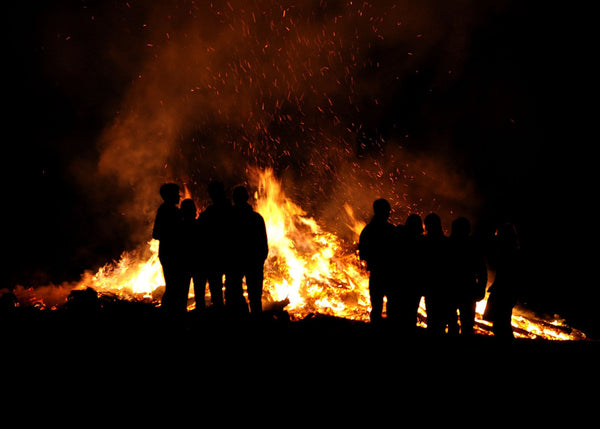
Other age-old traditions still follow today include jumping over fires that signify welcoming springtime.
Although rooted in olden times’ beliefs and observances, these customs endure even today as they connect us to our past while honoring nature’s renewal through ritualistic commemorations on Walpurgisnacht – particularly involving “witches”.
Summary
The festival of Walpurgisnacht, a blend of pagan and Christian customs, is an intriguing celebration that signifies the transition from winter to spring. Its roots lie in ancient fertility rituals, but it also holds significance for Saint Walpurga and the beliefs surrounding witches’ gatherings. With its diverse history, culture, and traditions, this event offers a vibrant tapestry to explore. Whether one chooses to partake in themed parties or traditional rites or simply delve into its folklore and past events – celebrating with gusto allows us to welcome springtime while embracing life’s natural cycle.
Frequently Asked Questions
When is Walpurgis night?
The night from 30 April to 1 May
Do other countries celebrate Walpurgisnacht?
Yes, Walpurgisnacht is celebrated in various countries across Europe, particularly in Northern and Central Europe. The origins of this festival date back to ancient pagan celebrations and traditions and were later assimilated into Christian celebrations. Here are some countries where Walpurgis Night is observed:
-
Sweden: In Sweden, Walpurgis Night is known as Valborgsmässoafton and is celebrated on April 30th. It is a significant event marked by bonfires, singing traditional songs, and gatherings in public spaces.
-
Finland: Walpurgis Night, or Vappu in Finnish, is a major holiday celebrated on April 30th and May 1st. It is characterized by outdoor festivities, picnics, parades, and the wearing of white caps by university students.
-
Estonia: Known as Volbriöö, Walpurgis Night is celebrated on April 30th with lighting fires, dancing, and the crowning of a "Spring Queen" in some regions.
-
Czech Republic: In the Czech Republic, the festival is called Čarodějnice, meaning "witches' night." It is observed on April 30th with bonfires, music, and dancing, symbolizing the arrival of spring.
-
Latvia and Lithuania: Both countries celebrate Walpurgis Night, known as Valpurgijos naktis in Lithuanian and Valpurgijas nakts in Latvian, with bonfires, singing, and dancing on April 30th.
These celebrations often include customs such as burning effigies of witches or lighting bonfires to ward off evil spirits and welcome the arrival of spring. Each country puts its own unique cultural spin on the festivities, but the underlying theme of rebirth, renewal, and the triumph of light over darkness remains central to the spirit of Walpurgis Night across Europe.
What is Walpurgisnacht and its connection to Halloween?
Walpurgisnacht is a traditional German celebration that takes place on April 30th and centers around the belief of witches gathering to fly to Mount Brocken. Similarities between Walpurgisnacht and Halloween, which can be traced back to the Celtic holiday of Samhain, include their emphasis on supernatural beings and connections with spiritual realms. During Samhain, it was believed that spirits could easily cross over into our world as the veil separating the living from the dead.
What is the significance of bonfires in Walpurgisnacht celebrations?
The tradition of lighting bonfires during Walpurgisnacht festivities represents the coming of spring and is believed to ward off malevolent entities. This custom can be traced back to earlier May Day celebrations in regions throughout northern Europe.
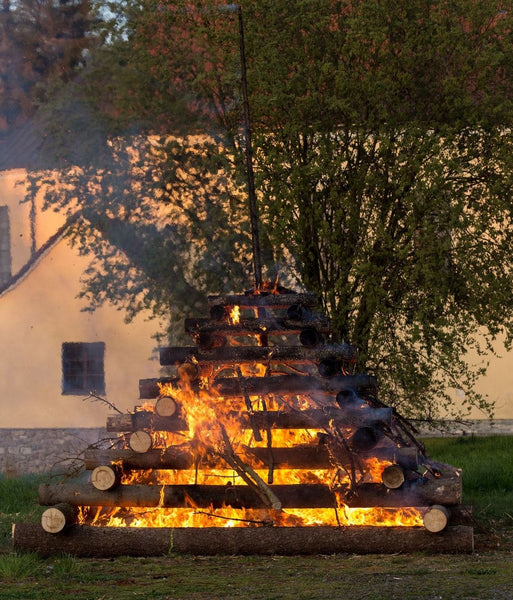
How did the Christianization of the Norse influence Walpurgisnacht?
The conversion of the Norse people to Christianity brought about a merging of their traditional witches pagan celebration with the legend and commemoration of Saint Walpurga, ultimately giving rise to the current iteration known as Walpurgisnacht. This fusion had a significant impact on how this holiday is celebrated by incorporating elements from both pagan rituals and Christian beliefs surrounding witches.
